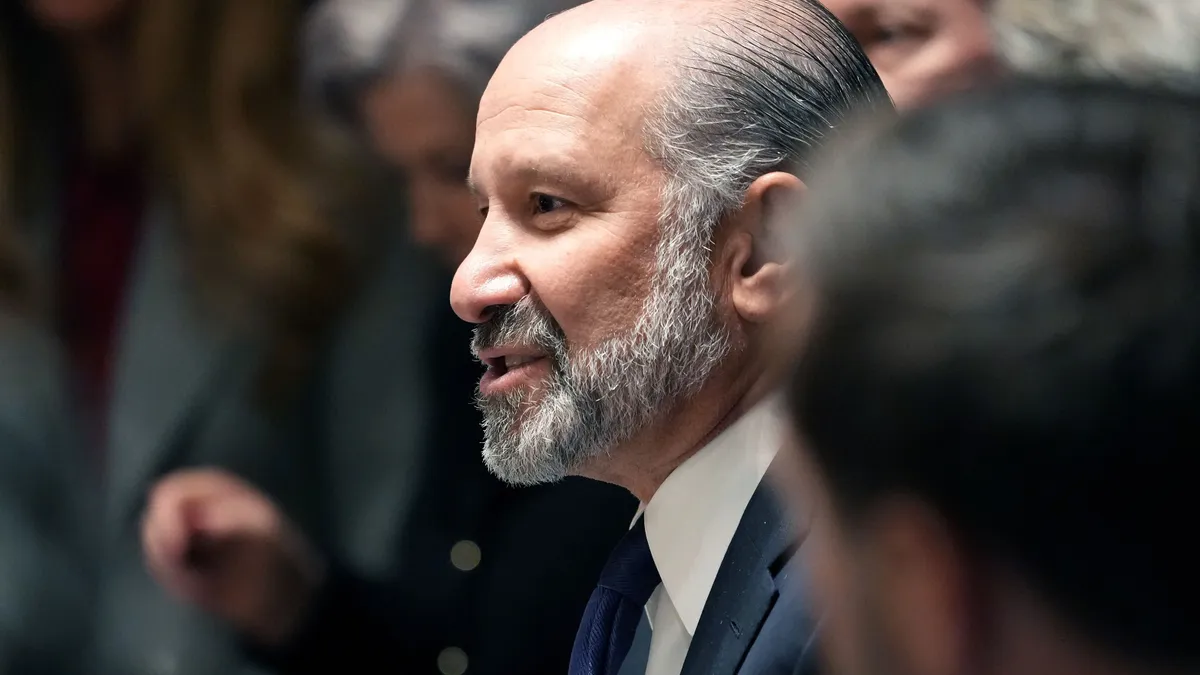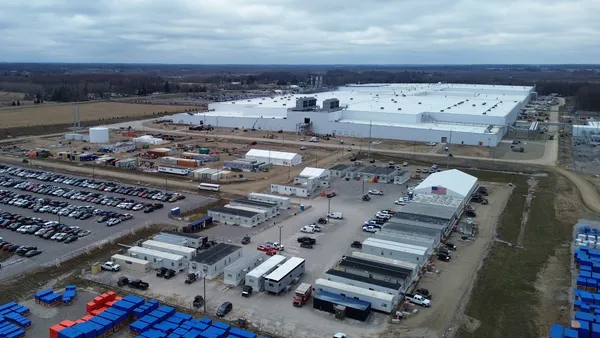As 2024 kicks into high gear, new vehicle inventories are stabilizing, pent-up demand is dissipating and the hoped-for demand for electric vehicles is lower than expected.
Making matters worse, economic headwinds like high interest rates and stubbornly low consumer confidence, combined with a lack of EV charging infrastructure and a confusing web of federal policies and regulations, are threatening to slow vehicle sales and the EV transition.
Here are some of the trends that will shape consumer behavior and, in turn, automakers’ sales in the year ahead.
Higher interest rates may impact new vehicle sales
When the COVID-19 pandemic upended auto supply chains, the industry was buoyed by high demand and low interest rates. The combination, in tandem with scarce inventories, allowed automakers to sell vehicles at record-high prices.
“We’ve got about a quarter of Americans telling us that they’re worried about making upcoming payments, and about half of consumers telling us that they’re worried about the amount of money that they have saved."

Ryan Robinson
Automotive Research Leader at Deloitte
But in 2024, higher interest rates and shaky consumer confidence could impact new vehicle sales.
“I think that's going to be our number one factor to watch this year,” said Steve Patton, Americas mobility sector leader at EY. “EV sales have declined, hybrid sales have increased.”
The price gap between EVs and internal-combustion-engine vehicles becomes more significant when interest rates are higher, Patton added. As of November, the average transaction price for an EV was $52,345 compared with $48,247 for all new vehicles, according to Kelley Blue Book.
A majority of consumers shopping for a new vehicle expect to spend less than $600 a month for their monthly payment, including any bundled services, said Ryan Robinson, automotive research leader at Deloitte.
However, the average monthly payment on a new vehicle for increased from $701 in 2022 to $726 in 2023, even though the average amount financed by consumers fell from $41,453 to $40,184, according to Experian’s most recent State of the Automotive Finance Market report. Average loan interest rates also increased from 5.26% to 7.03% between 2022 and 2023.
“We've got about a quarter of Americans telling us that they're worried about making upcoming payments, and about half of consumers telling us that they're worried about the amount of money that they have saved," Robinson said.
U.S. consumers have largely spent the “war chest” they saved up during the pandemic when many people stayed home rather than spending money on dining, tourism and other activities, Robinson added.
“We may be reaching a bit of a breaking point where consumers are just saying, you know, enough is enough,” Robinson said.
Higher interest rates also increase borrowing costs for automakers, which impacts overall profit margins. Ford’s long-term debt was $142.7 billion as of Sept. 30, 2023, according to Yahoo Finance.
“You know, that was great when money was free,” Robinson said about Ford’s debt. But now the automaker must consider the impact that its debt will have on profitability and margins going forward. “It's paramount, because of the amount of debt servicing that these companies have."
EV charging is slowly ramping up
In years past, consumers were often reluctant to drive EVs because they were concerned about battery range, but that’s shifting, said Alan Amici, president and CEO of the Center for Automotive Research. Charging anxiety is now a growing concern, creating a "bottleneck" for EV adoption as consumers wonder where they'll charge their car when on a trip, Amici said.
The first federally funded EV charging stations opened in 2023 in Ohio and New York, as the two states took advantage of money made available through the Bipartisan Infrastructure Law’s National Electric Vehicle Infrastructure Formula Program and other policies, Amici said.
However, the NEVI funding rollout has been “extraordinarily slow,” — with the first stations coming more than two years after the law was passed, said Levi McAllister, partner and head of the Electric Vehicle Working Group at law firm Morgan Lewis.
McAllister added that automakers and other for-profit businesses are also building and expanding charging networks to encourage new car shoppers to adopt EVs. However, federal and state policymakers could take further action in 2024 to expedite EV charging implementation.
“There's still a tremendous need for public charging,” McAllister said. He noted that despite lawmakers’ attempts to get consumers to adopt EVs in the U.S., “none of it will matter if there is not a way to charge them.”

The industry is still adapting to the IRA’s requirements
Experts say policymakers will refine the Inflation Reduction Act’s implementation this year, following the law’s rocky rollout.
The Biden administration “was very bullish about clean transportation and EVs,” but the IRA’s “extremely clunky and slow going” rollout has led to growing confusion and uncertainty among consumers, car dealers and others, McAllister said.
“It creates a potential chilling effect in the industry about the extent to which [original equipment manufacturers] and, in turn, consumers can rely on these tax credits being available,” he said.
Brian Irwin, managing director with Alvarez & Marsal’s automotive and industrials group, said the lack of regulatory certainty could make it difficult for automakers to plan and operate their businesses. That’s because rule changes often necessitate shifts in strategy and investments, which affects profits, especially when many “investments have a long-term payback period,” Irwin said.
“It’s that changing of the rules that causes the most concern in the industry,” Irwin said.
In October, the Treasury Department and Internal Revenue Service said they would allow car shoppers to transfer their clean vehicle tax credits — up to $7,500 — to a car dealer starting Jan. 1, 2024. The policy aims to increase clean vehicle sales by lowering a vehicle’s purchase price at the point of sale. Currently, consumers must wait until they file their taxes to claim the credits.
"It’s that changing of the rules that causes the most concern in the industry."

Brian Irwin
Mmanaging Director with Alvarez & Marshal’s automotive and industrials group.
While experts say the change should make it easier for consumers to take advantage of the credits, some worry that too few models qualify for the full tax credit. The number of EVs that are eligible for clean vehicle tax credits dropped from 35 to 14 in 2024, according to the Energy Department and IRS, leaving consumers with fewer options.
Jonathan Smoke, chief economist at Cox Automotive, said there may not be enough qualifying EV models for the tax credits “to move the needle” on EV adoption. General Motors will provide $7,500 in financial incentives for EVs that do not qualify for the tax credits to help dealers sell EVs until more of its vehicles become eligible.
Dealers, meanwhile, worry the IRS won’t pay them quickly, even though the agency said it would transfer funds within 72 hours in most cases.
“They're expecting this to be a real headache in terms of cash flow and receiving the money,” Smoke said.





















